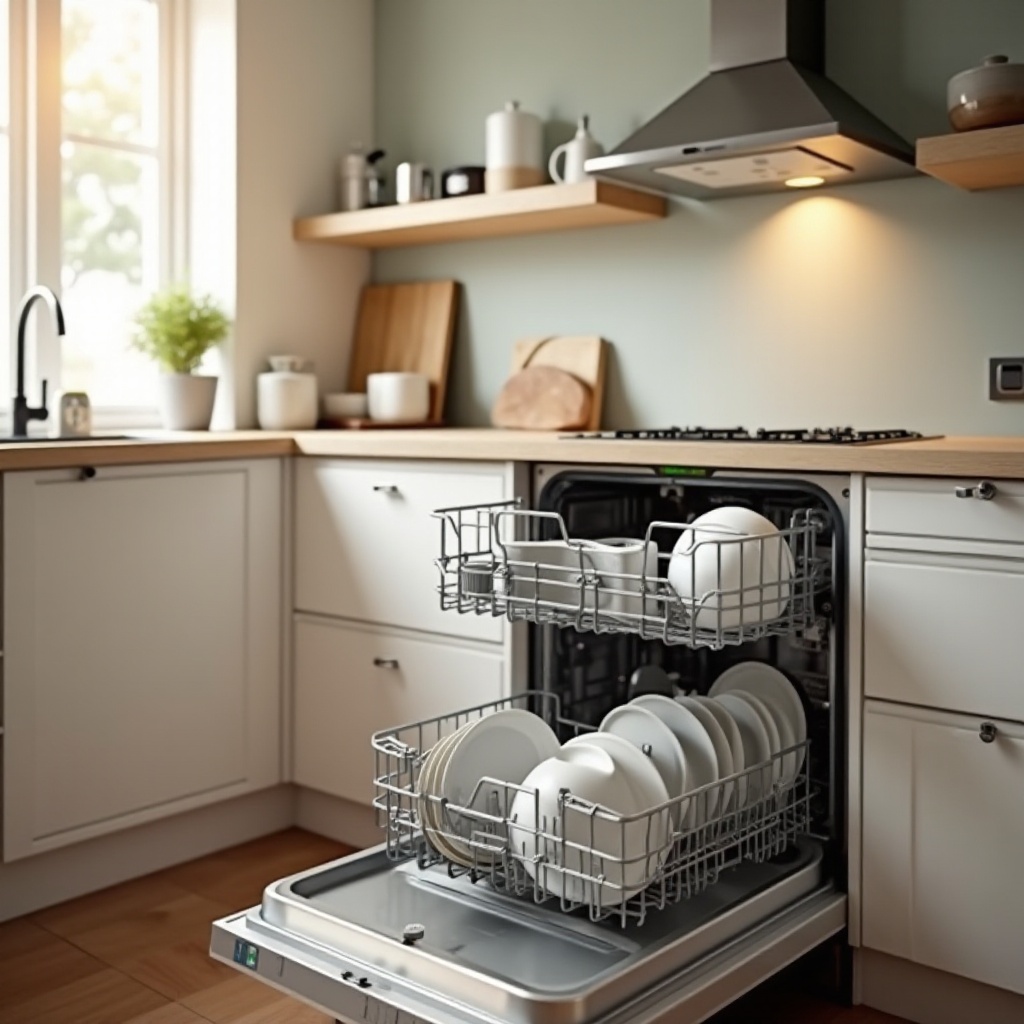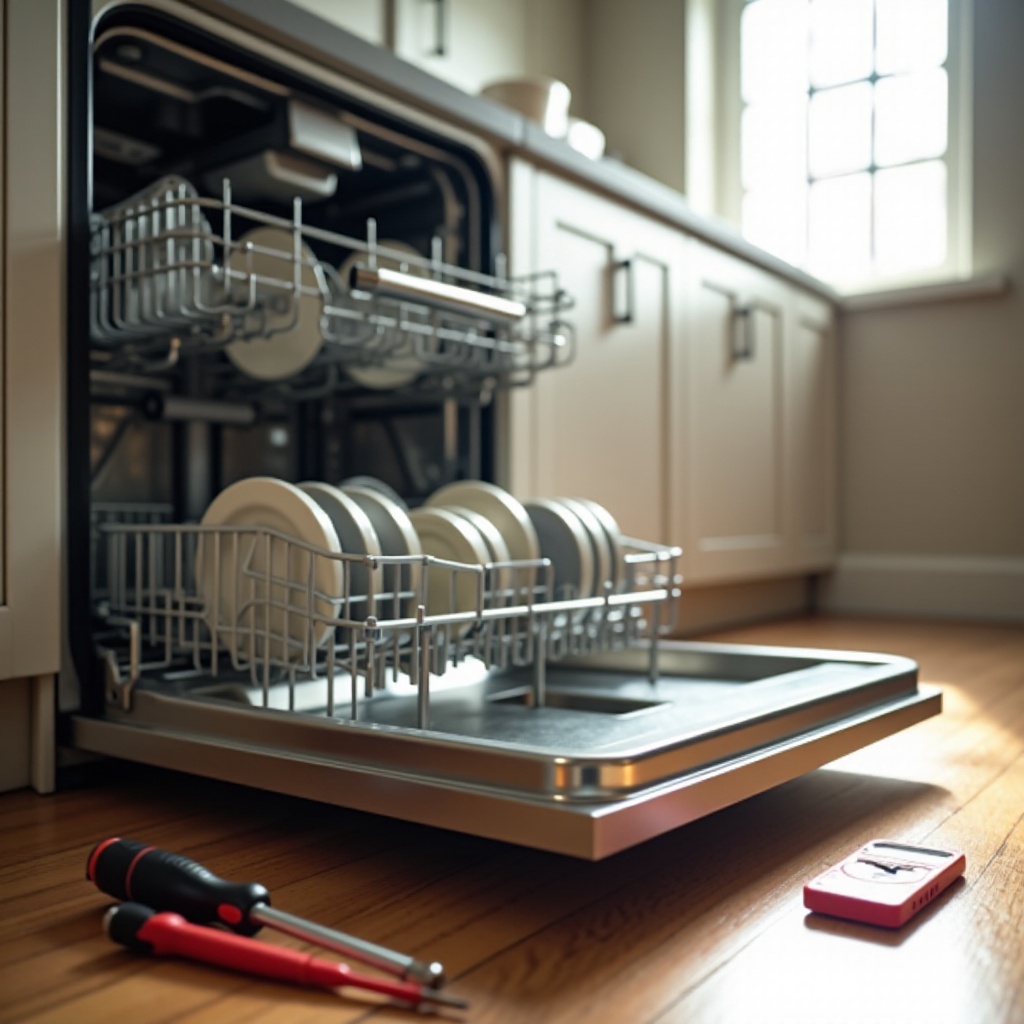Introduction
A malfunctioning dishwasher can disrupt your daily routine. But before panic sets in, understanding why your dishwasher stopped working is crucial to finding a solution. This guide provides you with essential troubleshooting steps and preventive tips to keep your dishwasher performing efficiently. Let's dive into why this common household appliance might fail and how you can address the issues with ease.

Common Reasons Your Dishwasher Stopped Working
Several issues can cause your dishwasher to stop. Being aware of these issues helps in identifying the right fix.
- Power Supply Concerns: First, ensure that your dishwasher is plugged into a functioning power outlet. Don't forget to check if the circuit breaker has tripped, cutting off electricity to the appliance.
Door Latch Problems: An improperly closed door could prevent your dishwasher from starting. Closely inspect the latch for visible damage or misalignment, which might be hindering the closing mechanism.
Water Supply Disruptions: Confirm your dishwasher's connection to the water supply and ensure the valve is open. Low water pressure or a closed valve can stop your dishwasher from functioning as expected.
Understanding these potential causes allows for more targeted troubleshooting, saving time and reducing frustration when your dishwasher refuses to cooperate.

Step-by-Step Troubleshooting Tips
To efficiently address common issues, let's follow a structured approach to troubleshoot your dishwasher.
1. Check the Power and Connections:
- Ensure the dishwasher's plug is securely connected to the outlet. Test the outlet with another device to confirm its functionality. Reset any tripped circuit breakers that might be interrupting power.
- Examine the Door and Settings:
Verify that the dishwasher door is tightly shut. Look for any sensory light that indicates a securing issue. Review settings and reset the machine as needed by unplugging it for a few minutes.
Investigate Potential Blockages:
- Examine the dishwasher's spray arms for any obstructions and clean them if necessary. Check and clean the filter to prevent food particle blockages. Ensure the inlet valve is clear and functioning, allowing water to fill the tank appropriately.
Following these steps helps address routine issues effectively, helping you avoid situations where the dishwasher disappoints.

Detailed Solutions for Frequent Issues
Once basic issues are ruled out, it's time to look deeper into frequent dishwasher malfunctions.
Persistent Non-Start Problems: If your dishwasher won't start despite resolving previous issues, the control board or thermal fuse may be defective. Utilize a multimeter to test the thermal fuse for continuity, and replace any malfunctioning components. Seek professional assistance if uncertain.
Resolving Cleaning Inefficacies: Should dishes remain dirty, inspect the water inlet valve, assess water temperature, and clean the spray arms thoroughly. A water temperature of at least 120°F (49°C) is essential for optimal cleaning.
Solving Drainage Failures: When the dishwasher doesn't drain, investigate the drainage hose and filter for clogs. Clear any blockages discovered. Inspect connections to garbage disposals if applicable, ensuring smooth water flow.
Addressing these issues with attentive detail ensures your appliance functions with renewed efficiency.
When to Seek Professional Help
There are times when DIY repairs may not suffice, and it's advisable to involve a professional service.
Handling Unfixable Issues: Electrical issues such as burnt smells or malfunctioning control boards require professional expertise. Handling these without adequate knowledge can lead to further damage or safety hazards.
Evaluating Repair Versus Replacement: Consider the age and repair cost of your dishwasher. When repair costs soar beyond half the price of a replacement, acquiring a new unit may offer better long-term value.
Recognizing when professional help is required ensures timely, safe, and effective solutions to complex problems.
Preventive Maintenance Tips for Seamless Operation
Preventive action keeps your dishwasher performing optimally with fewer unexpected breakdowns.
- Routine Cleaning Techniques:
Clean door seals with a damp cloth to ward off grime. Perform an empty cycle with a cup of vinegar monthly to clear away accumulated soap and grease build-ups.
Regular Inspections Checklist:
- Ensure filters and drains remain free of debris, inspecting them regularly. Run a rinse cycle through spray arms weekly to avoid potential clogs.
Incorporating these simple maintenance practices promotes the longevity of your dishwasher, minimizing potential issues and keeping it running smoothly for years to come.
Conclusion
Effectively troubleshooting when your dishwasher stops working can save both time and money. Through diligent maintenance and timely troubleshooting, your appliance will stay reliable and efficient. Always have the option to seek professional help if challenges persist, ensuring safety and peace of mind.
Frequently Asked Questions
Why is my dishwasher not turning on?
This is often due to power supply issues. Confirm that the dishwasher is plugged in, the outlet is working, and the circuit breaker is not tripped.
How often should I clean my dishwasher?
Clean your dishwasher monthly by wiping down seals, cleaning filters, and running a cycle with vinegar to remove residue.
What should I do if my dishwasher leaks?
Inspect the door seal for damage and ensure dishes aren't obstructing it. Check hoses for leaks and unclog the drainage system.
